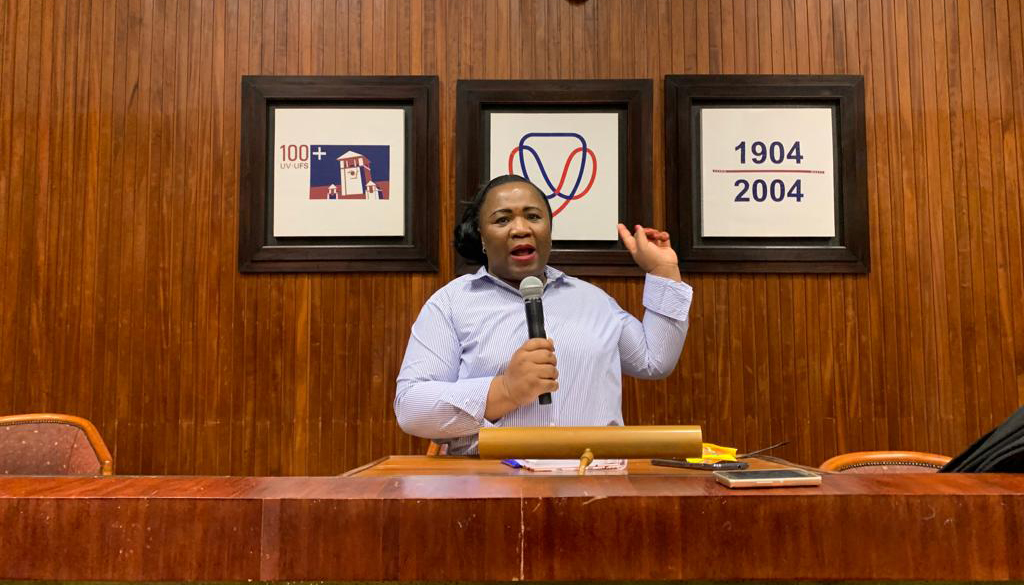Multilingualism is a buzzword at many South African universities. These universities promote social cohesion, a sense of belonging, and epistemic access and success by improving and advancing existing language policies and practices.
On 16 September 2022, the University of the Free State (UFS) had its first student discussion on the Bloemfontein Campus regarding the draft Language Policy, which is being reviewed for an updated version in 2023. With English being the primary language of teaching and learning, this policy aims to promote diversity in teaching and learning in Sesotho, isiZulu, Afrikaans, and Sign Language through translating tutorials and academic vocabulary and continuously establishing and maintaining trans-institutional, interinstitutional, and intra-institutional collaborations for the development of a translanguaging culture.
During the presentation,
Dr Nomalungelo Ngubane, Director of the
Academy for Multilingualism, revealed to students that the
United Nations Educational, Scientific and Cultural Organisation (UNESCO) has designated a decade – from 2022 to 2032 – as the International Decade of Indigenous Languages. This guarantees that these languages are promoted and advanced enough to be utilised as academic languages in academia. "This puts pressure on the
Department of Higher Education and Training (DHET) to recognise students' different languages in institutions. Section 29 of the South African Constitution further stipulates that we all have the right to learn in our preferred language, but only if it is practical. So currently, we cannot learn in these languages due to the lack of glossaries," Dr Ngubane said.
During the question-and-answer session,
Swanti Jerry Thoka, a former Campus Student Representative Council (CSRC) President and Actuarial Science student, cited the policy. "The policy states that it will entail developing previously disadvantaged languages, which includes both indigenous languages and Sign Language, as well as continuing to improve existing ones. Why don't we concentrate on development because the current languages have advanced? For example, a Sign Language policy appears to exist, but it lacks a comprehensive execution strategy," Thoka said.
Dr Ngubane noted all the remarks and questions, and assured attendees that they would be addressed at the next Council meeting. She stressed the value of students’ participation in policymaking, since their future is being debated. She further explained that students should provide the SRC with recommendations to submit at the Council meetings, because the SRC are their elected representatives.

Dr Nomalungelo Ngubane, Director of the Academy for Multilingualism, presents the draft language policy at the Equitas, Bloemfontein Campus.
(Photo: Edzani Nephalela)